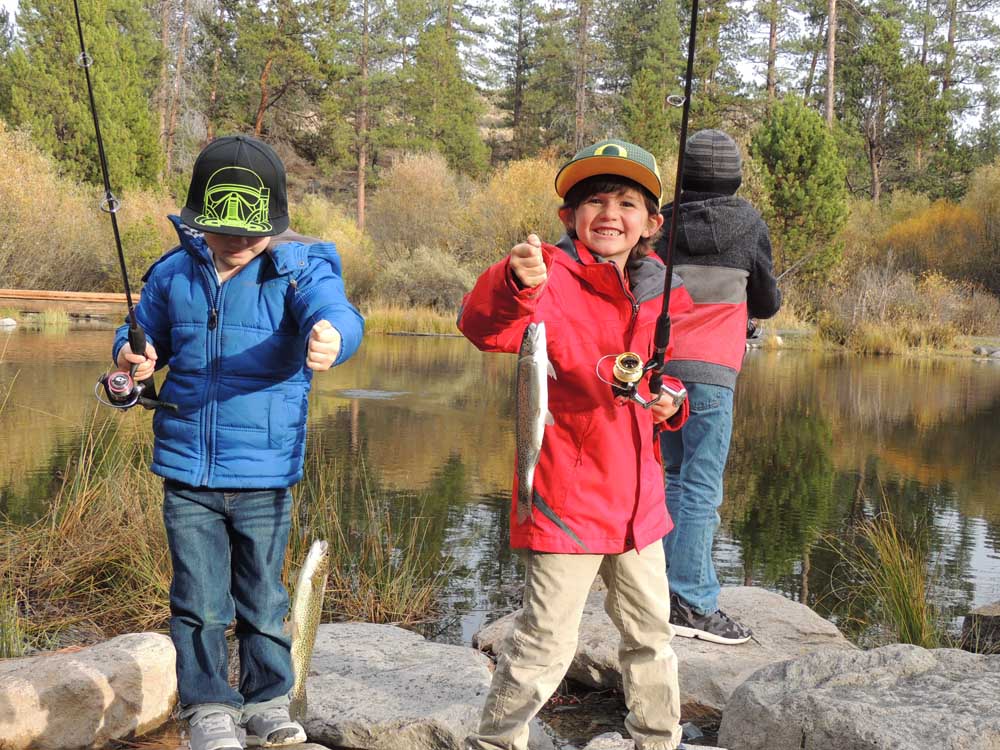Hunting and fishing: Best wishes for 2018
Published 6:05 pm Wednesday, August 15, 2018

- Young anglers at Shevlin Pond show off their catches.
We missed the first, a rooster that rocketed out of a tangle of downed trees and red-limbed willows. When it hit the wind, blowing hard out of the southwest, it sailed like a rocket.
When Liesl, the pudelpointer, locked up on the next bird, it gave me a fast left-to-right crossing shot. Swinging the Weatherby hard, I led a pheasant and a half in front when the trigger broke. The rooster crashed into cattails.
Trending
Another pheasant rocketed over shaky ice, and my friend Grant Gehrmann held off so the dog didn’t have to risk her life over it.
This last hike of December — with a shotgun through boulders the size of tiny homes, on shale slopes, around little ponds with wigeon and mallards, mergansers and snipe taking to the air, where my dog hunted her heart out for four birds retrieved — was a good time to look forward. Here’s what I’m wishing for in 2018:
Roll back the Cascade-Siskiyou Monument
In Oregon we have a wealth of public land but a poverty of access. A good example is the Cascade-Siskiyou National Monument, which was established by former President Bill Clinton in 2000, locking up 52,000 acres. In one of his last acts in office, in 2017, former President Barack Obama expanded the monument by 48,000 acres, limiting access to a lot of ground that Oregonians have enjoyed for many years.
In a 1995 study of accessibility to hunting grounds, the United States Fish and Wildlife Service found Oregon ranked 48 out of 48 states, dead last (no data from Montana and Wisconsin) in terms of accessibility to public land.
That was before the Clinton proclamation that limited access and before the Obama proclamation that limited more access. Rolling back the monument to the 2000 proclamation would return management from Washington, D.C., to the people of Oregon.
Trending
Move ahead with the wolf plan
In Oregon we had the benefit of watching what happened in Idaho as Canadian wolves populated the Gem State. And Oregon implemented a wolf conservation and management plan in December 2005 — before the presence of wolves had been confirmed in Oregon.
Fifteen town hall meetings and four information sessions were held to involve the public. A committee made up of advocacy groups, conservation groups and cattlemen were at the table, and the wolf conservation and management plan was adopted by a unanimous vote of the Oregon Fish and Wildlife Commission.
Now Oregon’s wolf population numbers 112 (minimum estimate), this from a robust source population of about 900 in Idaho. Expect the number to grow by 20 percent each year as pups are born and wolves disperse from Idaho.
The management of this apex predator is fought over by this group and that, while we have an agency, the Oregon Department of Fish and Wildlife, made up of trained biologists, tasked with managing animals scientifically for the benefit of Oregonians.
Let’s develop wolf population management objectives, allow ODFW more management tools and move forward with the next phase of the Wolf Plan.
Control sea lions, protect steelhead
The ODFW estimated that sea lions ate 20 to 25 percent of the steelhead waiting to climb the fish ladder at Willamette Falls near Oregon City this past year. Everyone agrees the Willamette steelhead runs are endangered. The sea lions are a threat to the survival of these fish, but ODFW is still waiting for permits to remove the predators. Whether some of the offending sea lions are made available to marine parks or removed by lethal means, let’s protect the steelhead this year.
Pass 50-state reciprocity
Recently, the U.S. House of Representatives passed the Concealed Carry Reciprocity Act of 2017, which, if passed by the Senate and signed by President Donald Trump, would allow travelers with concealed-carry licenses from their home states to travel with their handgun across state lines. Every state recognizes the authority of every other state to issue driver licenses. If, for example, South Dakota recognizes Oregon’s driver license, shouldn’t it also recognize our concealed handgun license? This bill would, if passed, ensure law-abiding citizens can protect themselves while traveling without accidentally running afoul of the law in another state.
Put the brakes on the Summit OHV Plan
One of the things learned by researchers in the U.S. Forest Service Starkey Experimental Forest was the fewer the miles of road, the better for elk. The more roads in an area, the fewer elk there are. When road density reaches a certain point, elk leave altogether. I bring this up because a plan is in place, the Summit OHV project, to approve 137 miles of off-highway vehicle roads surrounding a narrow strip of Wilderness in the Ochocos, north and east of Prineville. This is critical elk habitat and doesn’t need 2-cycle and 4-cycle motorcycles and ATVs whining through it. Right now the U.S. Forest Service is driving this plan in spite of its own best science. I’d like to see the OHV plan go on the scrapheap.
A kids trout pond near Camp Sherman
One of the projects I’m excited about is a new ODFW youth pond under construction near Camp Sherman. Slated to open in May, this will be a half-acre pond, deeper than Shevlin Pond, so it will hold more fish. This will be a great place for families to teach kids a fishing tradition close to the Metolius River.
My best wishes for 2018.
— Gary Lewis is the host of “Frontier Unlimited TV” and author of “Fishing Central Oregon,” “Fishing Mount Hood Country,” “Hunting Oregon” and other titles. Contact Lewis at www.GaryLewisOutdoors.com.








